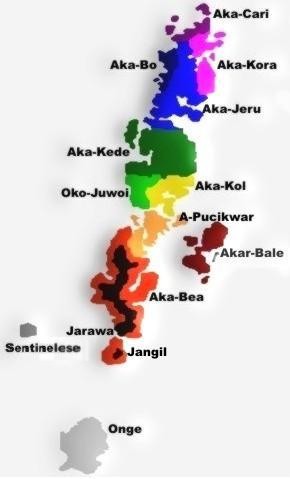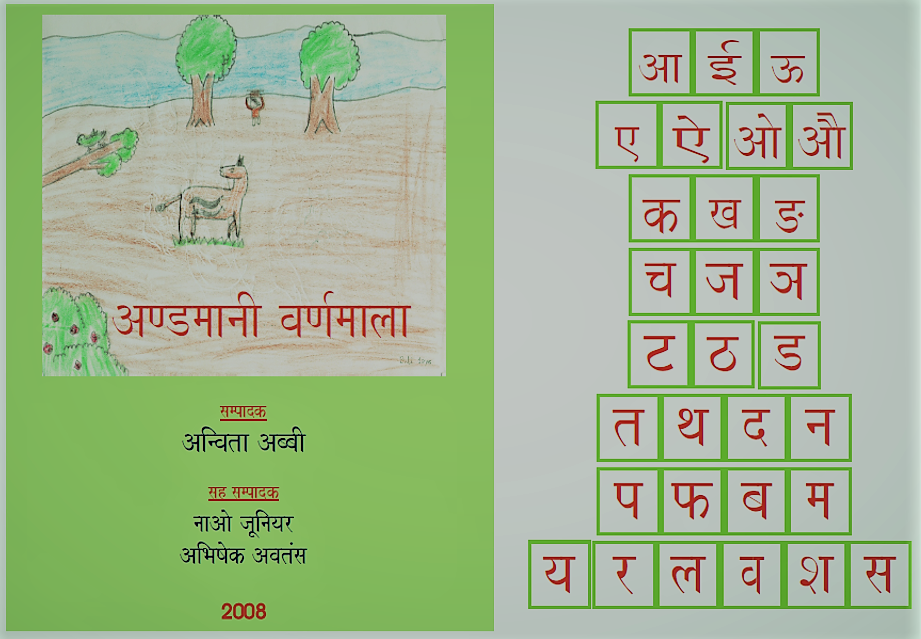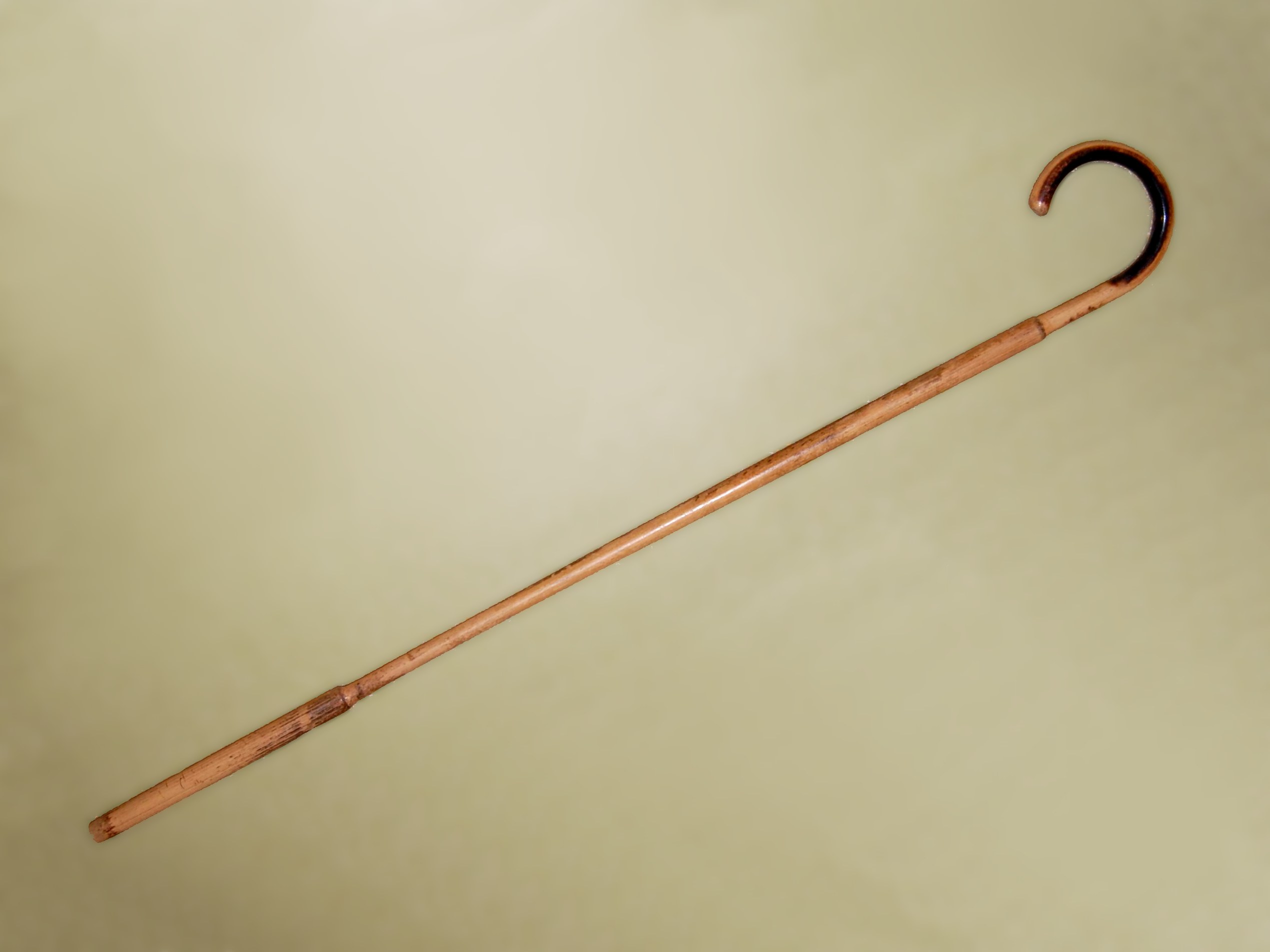|
Aka-Kora
The Kora (Cora) language, ''Aka-Kora'', is an extinct Great Andamanese language, of the Northern group. It was spoken on the northeast and north central coasts of North Andaman and on Smith Island. It has been extinct since November 2009 when its last speaker, Boro, died. Name The native name for the language was ''Aka-Kora'', also spelled ''Aka-Khora'' or ''Aka-Cora'' (''Aka-'' being a prefix for "tongue"); and this name is often used for the tribe itself. They were divided between shore-dwellers (''aryoto'') and forest-dwellers (''eremtaga'') subtribes. History By the time of the establishment of the first permanent colonial settlement at Port Blair (1858), the estimates size of the Kora tribe was about 500 individuals, out of perhaps 3500 Great Andamanese.George Weber (~2009), Numbers ''. Chapter 7 in ''. Accessed on 2012-07-12. However the tribe was discovered only much later, in the work leading to the 1901 census. Like other Andamanese peoples, the Kora were decimated dur ... [...More Info...] [...Related Items...] OR: [Wikipedia] [Google] [Baidu] |
Great Andamanese Languages
The Great Andamanese languages are a nearly extinct language family once spoken by the Great Andamanese peoples of the Andaman Islands in the Indian Ocean. History By the late 18th century, when the British first established a colonial presence on the Andaman islands, there were an estimated 5,000 Great Andamanese living on Great Andaman and surrounding islands, comprising 10 distinct tribes with distinct but closely related languages. From the 1860s onwards, the British established a penal colony on the islands, which led to the subsequent arrival of mainland settlers and indentured labourers, mainly from the Indian subcontinent. This coincided with the massive population reduction of the Andamanese due to outside diseases, to a low of 19 individuals in 1961. Since then their numbers have rebounded somewhat, reaching 52 by 2010. However, by 1994 there were no remembers of any but the northern lects, and divisions among the surviving tribes ( Jeru, Kora, Bo and Cari) had e ... [...More Info...] [...Related Items...] OR: [Wikipedia] [Google] [Baidu] |
Kora People
The Kora, Khora or Cora were one of the ten indigenous tribes of the Great Andamanese people, originally living on the eastern part of North Andaman Island in the Indian Ocean. The tribe is now extinct, although some of the remaining Great Andamanese on Strait Island claim to have Kora ancestors. The tribe spoke a distinctive Kora language, closely related to the other Great Andamanese languages. The native name for the language was ''Aka-Kora'', also spelled ''Aka-Khora'' or ''Aka-Cora'' (''Aka-'' being a prefix for "tongue"); and this name is often used for the tribe itself. They were divided between shore-dwellers (''aryoto'') and forest-dwellers (''eremtaga'') subtribes. History By the time of the first permanent British settlement at Port Blair (1858), the estimated size of the Kora tribe was about 500 individuals, out of perhaps 3500 Great Andamanese.George Weber (~2009), Numbers''. Chapter 7 in ''. Accessed on 2012-07-12. However the tribe was discovered only much late ... [...More Info...] [...Related Items...] OR: [Wikipedia] [Google] [Baidu] |
Jeru People
The Jeru language, ''Aka-Jeru'' (also known as ''Yerawa'', not to be confused with Järawa), is a nearly extinct Great Andamanese language, of the Northern group. Jeru was spoken in the interior and south coast of North Andaman and on Sound Island. A '' koiné'' of Aka-Jeru and other northern Great Andamanese languages was once spoken on Strait Island; the last semi-fluent speaker of this, Nao Jr., died in 2009. History As the numbers of Great Andamanese progressively declined over the succeeding decades, the various Great Andamanese tribes either disappeared altogether or became amalgamated through intermarriage. By 1994, the 38 remaining Great Andamanese who could trace their ancestry and culture back to the original tribes belonged to only three of them ( Jeru, Bo, and Cari).A. N. Sharma (2003), Tribal Development in the Andaman Islands', page 75. Sarup & Sons, New Delhi. The resulting Great Andamanese language was based on Jeru or a creole based on several languages, of ... [...More Info...] [...Related Items...] OR: [Wikipedia] [Google] [Baidu] |
Andamanese People
The Andamanese are the indigenous peoples of the Andaman Islands, part of India's Andaman and Nicobar Islands union territory in the southeastern part of the Bay of Bengal in Southeast Asia. The Andamanese peoples are among the various groups considered Negrito, owing to their dark skin and diminutive stature. All Andamanese traditionally lived a hunter-gatherer lifestyle, and appear to have lived in substantial isolation for thousands of years. It is suggested that the Andamanese settled in the Andaman Islands around the latest glacial maximum, around 26,000 years ago. The Andamanese peoples included the Great Andamanese and Jarawas of the Great Andaman archipelago, the Jangil of Rutland Island, the Onge of Little Andaman, and the Sentinelese of North Sentinel Island. At the end of the 18th century, when they first came into sustained contact with outsiders, an estimated 7,000 Andamanese remained. In the next century, they experienced a massive population decline due to epid ... [...More Info...] [...Related Items...] OR: [Wikipedia] [Google] [Baidu] |
India
India, officially the Republic of India (Hindi: ), is a country in South Asia. It is the seventh-largest country by area, the second-most populous country, and the most populous democracy in the world. Bounded by the Indian Ocean on the south, the Arabian Sea on the southwest, and the Bay of Bengal on the southeast, it shares land borders with Pakistan to the west; China, Nepal, and Bhutan to the north; and Bangladesh and Myanmar to the east. In the Indian Ocean, India is in the vicinity of Sri Lanka and the Maldives; its Andaman and Nicobar Islands share a maritime border with Thailand, Myanmar, and Indonesia. Modern humans arrived on the Indian subcontinent from Africa no later than 55,000 years ago., "Y-Chromosome and Mt-DNA data support the colonization of South Asia by modern humans originating in Africa. ... Coalescence dates for most non-European populations average to between 73–55 ka.", "Modern human beings—''Homo sapiens''—originated in Africa. Then, int ... [...More Info...] [...Related Items...] OR: [Wikipedia] [Google] [Baidu] |
Sponge
Sponges, the members of the phylum Porifera (; meaning 'pore bearer'), are a basal animal clade as a sister of the diploblasts. They are multicellular organisms that have bodies full of pores and channels allowing water to circulate through them, consisting of jelly-like mesohyl sandwiched between two thin layers of cells. Sponges have unspecialized cells that can transform into other types and that often migrate between the main cell layers and the mesohyl in the process. Sponges do not have nervous, digestive or circulatory systems. Instead, most rely on maintaining a constant water flow through their bodies to obtain food and oxygen and to remove wastes. Sponges were first to branch off the evolutionary tree from the last common ancestor of all animals, making them the sister group of all other animals. Etymology The term ''sponge'' derives from the Ancient Greek word ( 'sponge'). Overview Sponges are similar to other animals in that they are multicellular, he ... [...More Info...] [...Related Items...] OR: [Wikipedia] [Google] [Baidu] |
Walking Stick
A walking stick or walking cane is a device used primarily to aid walking, provide postural stability or support, or assist in maintaining a good posture. Some designs also serve as a fashion accessory, or are used for self-defense. Walking sticks come in many shapes and sizes and some have become collector's items. People with disabilities may use some kinds of walking sticks as a crutch but a walking cane is not designed for full weight support and is instead designed to help with balance. The walking stick has also historically been known to be used as a self defensive weapon and may conceal a knife or sword – as in a swordstick or swordcane. Hikers use walking sticks, also known as trekking poles, pilgrim's staffs, hiking poles, or hiking sticks, for a wide variety of purposes: as a support when going uphill or as a brake when going downhill; as a balance point when crossing streams, swamps, or other rough terrain; to feel for obstacles in the path; to test mud and wat ... [...More Info...] [...Related Items...] OR: [Wikipedia] [Google] [Baidu] |
Stick
Stick or the stick may refer to: Thin elongated objects * Twig * The weapon used in stick fighting * Walking stick, a device to facilitate balancing while walking * Shepherd's crook * Swagger stick * Digging stick * Swizzle stick, used to stir drinks Sports * Bandy#Rules, Bandy stick, used in bandy * Cue stick, used in pool, snooker and carom billiards * Hockey stick, used in hockey ** Field hockey stick ** Ice hockey stick * Lacrosse stick, used in lacrosse * The rods, called "the sticks" used to measure distance by the American_football#Officials_and_fouls, chain crew in American football Music * Drum stick, used to strike drums * Part of a bow (music), bow used to play a string instrument * Chapman Stick, an electric musical instrument in the guitar family * Percussion stick, a struck percussion instrument * ''Led Zeppelin IV'', a 1971 album sometimes referred to as ''Sticks'' * The Sticks (album), ''The Sticks'' (album), a 2012 album by Canadian band Mother Mother * ''Sticks ... [...More Info...] [...Related Items...] OR: [Wikipedia] [Google] [Baidu] |
Pencil
A pencil () is a writing or drawing implement with a solid pigment core in a protective casing that reduces the risk of core breakage, and keeps it from marking the user's hand. Pencils create marks by physical abrasion, leaving a trail of solid core material that adheres to a sheet of paper or other surface. They are distinct from pens, which dispense liquid or gel ink onto the marked surface. Most pencil cores are made of graphite powder mixed with a clay binder. Graphite pencils (traditionally known as "lead pencils") produce grey or black marks that are easily erased, but otherwise resistant to moisture, most chemicals, ultraviolet radiation and natural aging. Other types of pencil cores, such as those of charcoal, are mainly used for drawing and sketching. Coloured pencils are sometimes used by teachers or editors to correct submitted texts, but are typically regarded as art supplies, especially those with cores made from wax-based binders that tend to smear when ... [...More Info...] [...Related Items...] OR: [Wikipedia] [Google] [Baidu] |
Inalienable Possession
In linguistics, inalienable possession (abbreviated ) is a type of possession in which a noun is obligatorily possessed by its possessor. Nouns or nominal affixes in an inalienable possession relationship cannot exist independently or be "alienated" from their possessor. Inalienable nouns include body parts (such as ''leg'', which is necessarily "someone's leg" even if it is severed from the body), kinship terms (such as ''mother''), and part-whole relations (such as ''top''). Many languages reflect the distinction but vary in how they mark inalienable possession. Cross-linguistically, inalienability correlates with many morphological, syntactic, and semantic properties. In general, the alienable–inalienable distinction is an example of a binary possessive class system in which a language distinguishes two kinds of possession (alienable and inalienable). The alienability distinction is the most common kind of binary possessive class system, but it is not the only one. Some ... [...More Info...] [...Related Items...] OR: [Wikipedia] [Google] [Baidu] |
Tree
In botany, a tree is a perennial plant with an elongated stem, or trunk, usually supporting branches and leaves. In some usages, the definition of a tree may be narrower, including only woody plants with secondary growth, plants that are usable as lumber or plants above a specified height. In wider definitions, the taller palms, tree ferns, bananas, and bamboos are also trees. Trees are not a taxonomic group but include a variety of plant species that have independently evolved a trunk and branches as a way to tower above other plants to compete for sunlight. The majority of tree species are angiosperms or hardwoods; of the rest, many are gymnosperms or softwoods. Trees tend to be long-lived, some reaching several thousand years old. Trees have been in existence for 370 million years. It is estimated that there are some three trillion mature trees in the world. A tree typically has many secondary branches supported clear of the ground by the trunk. This trunk typically ... [...More Info...] [...Related Items...] OR: [Wikipedia] [Google] [Baidu] |
Limb (anatomy)
A limb (from the Old English ''lim'', meaning "body part") or leg is a jointed, muscled appendage that tetrapod vertebrates use for weight-bearing and terrestrial locomotion such as walking, running and jumping, for paddle-swimming, or for grasping and climbing. The distalmost portion of a limb is known as its extremity. The limbs' bony endoskeleton, known as the appendicular skeleton, is homologous among all tetrapods. All tetrapods have four limbs that are organized into two bilaterally symmetrical pairs, with one pair at each end of the torso. The cranial pair are known as the forelimbs or ''front legs'', and the caudal pair the hindlimbs or ''back legs''. In animals with more upright posture (mainly hominid primates, particularly humans), the forelimbs and hindlimbs are often called upper and lower limbs, respectively. The fore-/upper limbs are connected to the thoracic cage via the shoulder girdles, and the hind-/lower limbs are connected to the pelvis via the hip ... [...More Info...] [...Related Items...] OR: [Wikipedia] [Google] [Baidu] |







